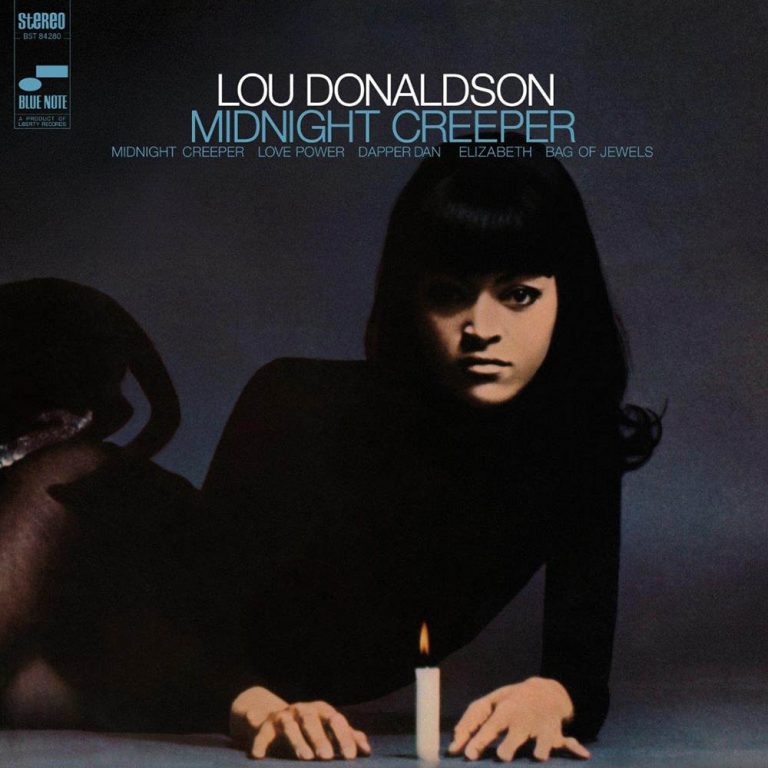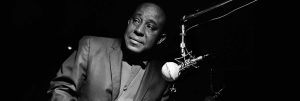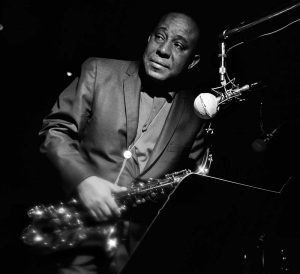In the spring of March 1968, alto saxophonist Lou Donaldson assembled his group of young talented players at Englewood Cliff. The mood was buoyant. Donaldson was still riding high on the success of his previous album, which spawned the hard-bop soul-jazz classic “Alligator Bogaloo.”
“That was a great group,” Donaldson reminisced in an interview. “I’d play that music for nothing – no money!”
Ostensibly, the lineup for the “Midnight Creeper” sessions was the same as “Alligator Bogaloo”, with Donaldson only switching out cornet player Melvin Lastin Sr. for trumpeter Blue Mitchell. Most importantly, Donaldson kept the winning rhythm section of Lonnie Smith on organ, Leo Morris alias Idris Muhammad on drums and a 25-year-old George Benson on guitar. The result is no-nonsense soul-jazz with a funky groove, packed with exuberant solos over a collection of swinging uptempo numbers and bluesy ballads – pitched to a younger audience, but still informed by Donaldson’s early bebop years.

Lou Donaldson Midnight Creeper (Blue Note Tone Poet Series)
Available to purchase from our US store.Donaldson had made a name for himself in the 1950s, taking inspiration from Charlie Parker and playing with many greats of the time. Alfred Lion discovered him in 1952, and Donaldson quickly began recording for Blue Note as a band leader. Although he played with Art Blakey, Clifford Brown and Horace Silver in a band that would eventually become the Jazz Messengers, he knew his mind and his sound, and only rarely played as a sideman.
Donaldson’s first run of recordings for Blue Note were bop. Albums like “Blues Walk” and “Sunny Side Up” were well-versed in blues idioms. However as Donaldson began to adjust elements, such as swapping the piano for an organ and including congas with the drums, a new style emerged. He found himself at the forefront of a battle for the hearts and minds of a younger audience.
As the liner notes for “Midnight Creeper” explain, shifting tastes through the 1960s meant that jazz was losing its cultural cachet. Many musicians were taking the genre in an avant-garde direction, and jazz had been neglected by record labels and promoters often at the expense of entertaining new listeners. In this sense, Donaldson’s soul-jazz style was born from making it easier to feel. It’s jazz, but it’s open-armed, stripped of complex constructions and textures, while nodding to the musical language of forefathers like Charlie Parker, Thelonious Monk, and Clifford Brown. As Donaldson used to say before his shows, “no fusion, no confusion!”
That’s what we get with “Midnight Creeper”, a masterclass in the straightforward, hard-swinging soul-jazz with a blues lean. Lonnie Smith, Idris Muhammed and George Benson set up the kind of funky grooves and supportive vamps that give Donaldson plenty of space to blow his incisive alto tone. Two songs are penned by Donaldson, one by R&B producer Teddy Vann (originally a tubular bell-laden funk soul hit for The Sandpebbles) and another by saxophonist Harold Ousley – they’re all simply vehicles for the vibe. Lonnie Smith contributes one tune, “Bag Of Jewels”, showcasing his rapport with Idris Muhammad. The two are always in the pocket, with George Benson often providing extra chordal colour in the mid- to low registers. Benson is on fire throughout, displaying the kind of “brilliantine tone, conviction and occasional wildness” in his solos that Whitney Balliett had previously noted.

At this point in his discography, Lou Donaldson had perfected his soul-jazz recipe: gather some of the best players around, give them plenty of compositional space to let loose, and make sure they have a blast doing it. Alfred Lion and Rudy Van Gelder were there to capture the incredible sound and spirit of the performance. With “Midnight Creeper”, the bop master hit the sweet spot yet again, and the outcome is a great example of why Sweet Poppa Lou is considered one of the greatest alto men and a forefather of jazz, soul and funk.
Read On… Spring – Tony Williams’ Adventurous Early Masterpiece
Max Cole is a writer and music enthusiast based in Düsseldorf, who has written for record labels and magazines such as Straight No Chaser, Kindred Spirits, Rush Hour, South of North, International Feel and the Red Bull Music Academy..
Header image: Lou Donaldson. Photo: Francis Wolff/Blue Note Records.


